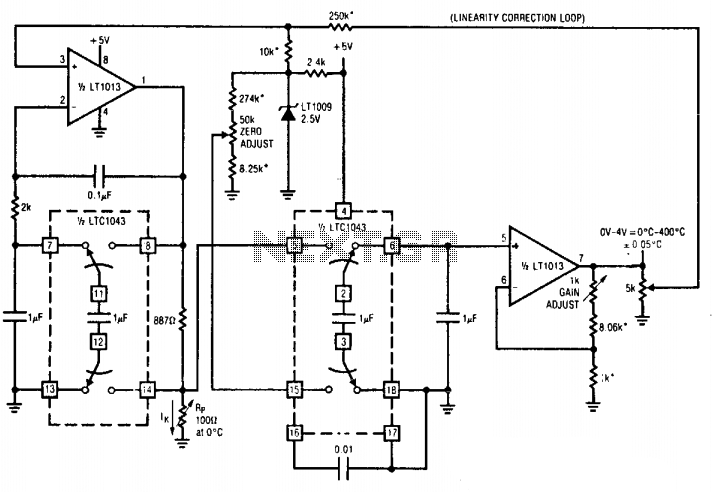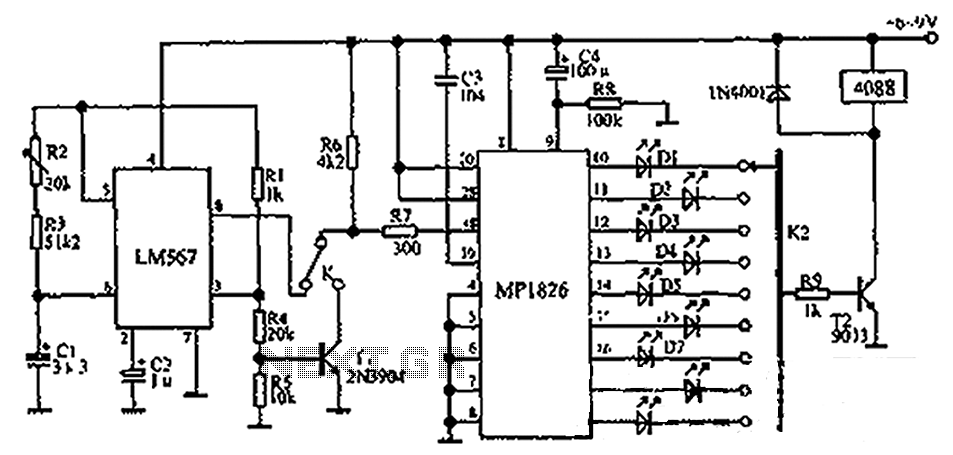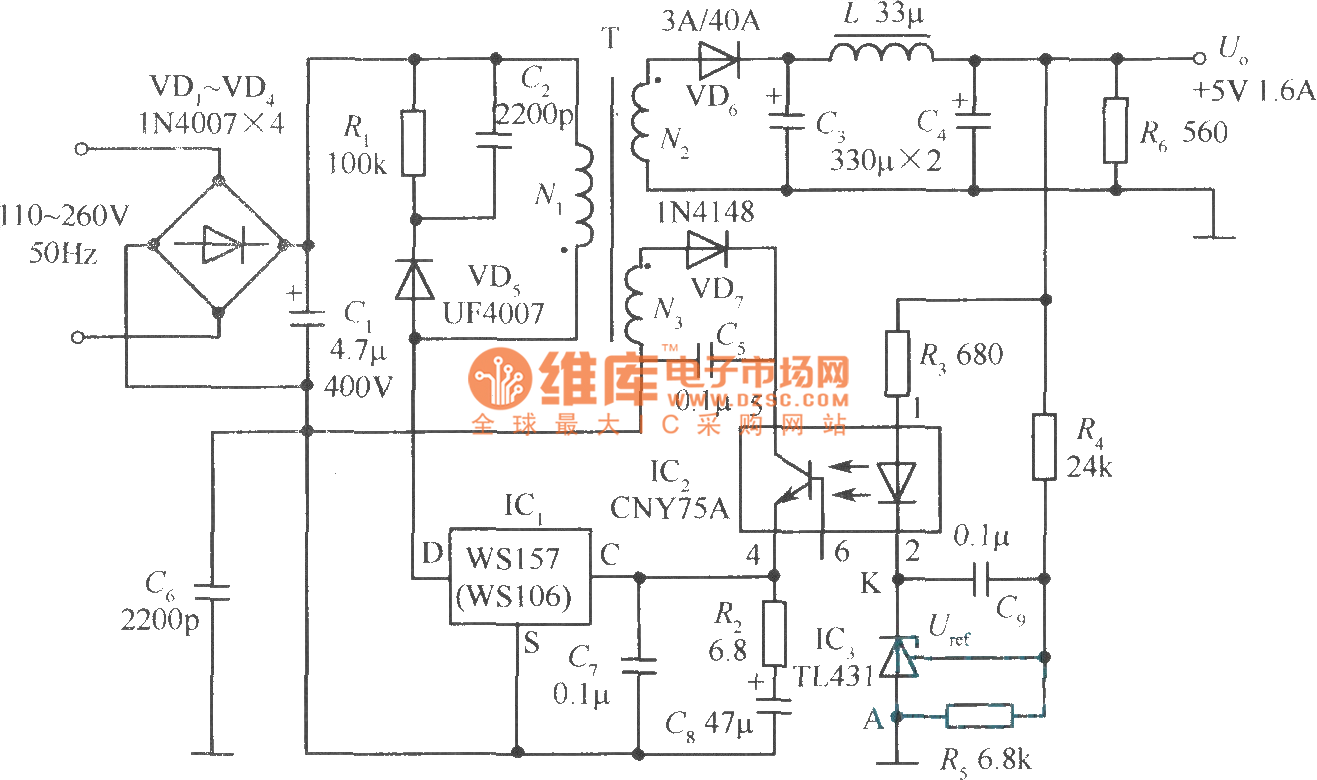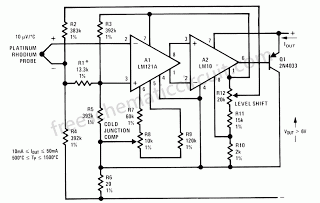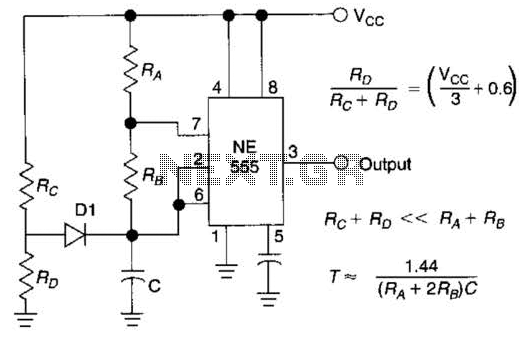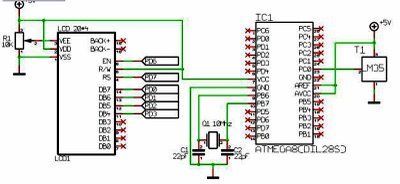
Precision Full-Wave Rectifier
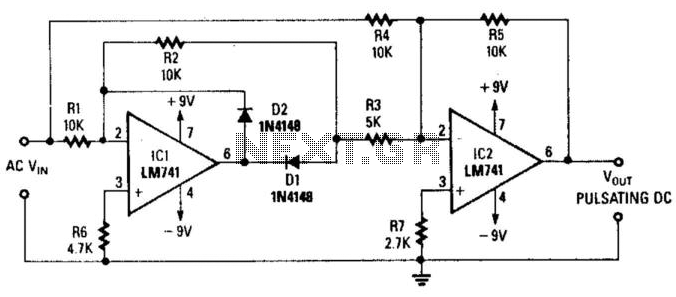
This circuit utilizes two operational amplifiers (op amps) to generate a full-wave rectified version of the input signal. Op amp IC1 inverts the negative-going signal, but due to diode D2, it remains close to zero. IC2 generates a positive-going signal. For positive input signals, IC1 outputs a negative signal through diode D1 to IC2, where it is combined with the positive signal from resistors R4 and R5. At the summing junction of IC2, the negative output from IC1 is doubled and inverted through IC2, R3, and R5, resulting in +Vout. This is then summed with the negative output of IC1 to yield the final output, +Vout.
The described circuit employs two operational amplifiers to achieve full-wave rectification, a process that allows both halves of an AC waveform to contribute to the output. The first operational amplifier, designated as IC1, functions as an inverter. When the input signal is negative, IC1 inverts this signal; however, diode D2 ensures that the output remains at a near-zero level, preventing the output from dropping too low.
The second operational amplifier, IC2, takes the output from IC1 and the positive signal derived from the resistive network formed by R4 and R5. The configuration ensures that during the positive half-cycle of the input signal, IC1 produces a negative output through diode D1, which is then fed into IC2.
At the summing junction of IC2, the circuit combines the inverted output from IC1 with the positive signal from the resistors. The resistors R3 and R5 play a crucial role in determining the gain and the summation effect at the output. The negative output from IC1 is effectively doubled and inverted in IC2, leading to a resultant positive output voltage, denoted as +Vout. This output is then summed with the negative output of IC1 to produce the final output, which is also +Vout.
This arrangement results in a full-wave rectified output, effectively allowing the circuit to convert an AC input signal into a DC equivalent, with both positive and negative halves of the waveform contributing to the output. The design is particularly useful in applications where a smooth DC voltage is required from an AC source, such as in power supply circuits or signal processing applications. Using two op amps, this circuit produces a full-wave rectified version of the input signal. Op amp IC1 invert s the negative-going signal, but because of D2, it stays near zero. IC2 produces a positive-going signal. For positive-going signals, IC1 produces a negative output through Dl to IC2, where it is combined with positive from R4/R5. At the summing junction of IC2, the negative output of IC1 is doubled and inverted via IC2, R3, and R5 to produce + V0ut- This is summed with negative output of IC1 to produce +Vout.
🔗 External reference
The described circuit employs two operational amplifiers to achieve full-wave rectification, a process that allows both halves of an AC waveform to contribute to the output. The first operational amplifier, designated as IC1, functions as an inverter. When the input signal is negative, IC1 inverts this signal; however, diode D2 ensures that the output remains at a near-zero level, preventing the output from dropping too low.
The second operational amplifier, IC2, takes the output from IC1 and the positive signal derived from the resistive network formed by R4 and R5. The configuration ensures that during the positive half-cycle of the input signal, IC1 produces a negative output through diode D1, which is then fed into IC2.
At the summing junction of IC2, the circuit combines the inverted output from IC1 with the positive signal from the resistors. The resistors R3 and R5 play a crucial role in determining the gain and the summation effect at the output. The negative output from IC1 is effectively doubled and inverted in IC2, leading to a resultant positive output voltage, denoted as +Vout. This output is then summed with the negative output of IC1 to produce the final output, which is also +Vout.
This arrangement results in a full-wave rectified output, effectively allowing the circuit to convert an AC input signal into a DC equivalent, with both positive and negative halves of the waveform contributing to the output. The design is particularly useful in applications where a smooth DC voltage is required from an AC source, such as in power supply circuits or signal processing applications. Using two op amps, this circuit produces a full-wave rectified version of the input signal. Op amp IC1 invert s the negative-going signal, but because of D2, it stays near zero. IC2 produces a positive-going signal. For positive-going signals, IC1 produces a negative output through Dl to IC2, where it is combined with positive from R4/R5. At the summing junction of IC2, the negative output of IC1 is doubled and inverted via IC2, R3, and R5 to produce + V0ut- This is summed with negative output of IC1 to produce +Vout.
🔗 External reference
